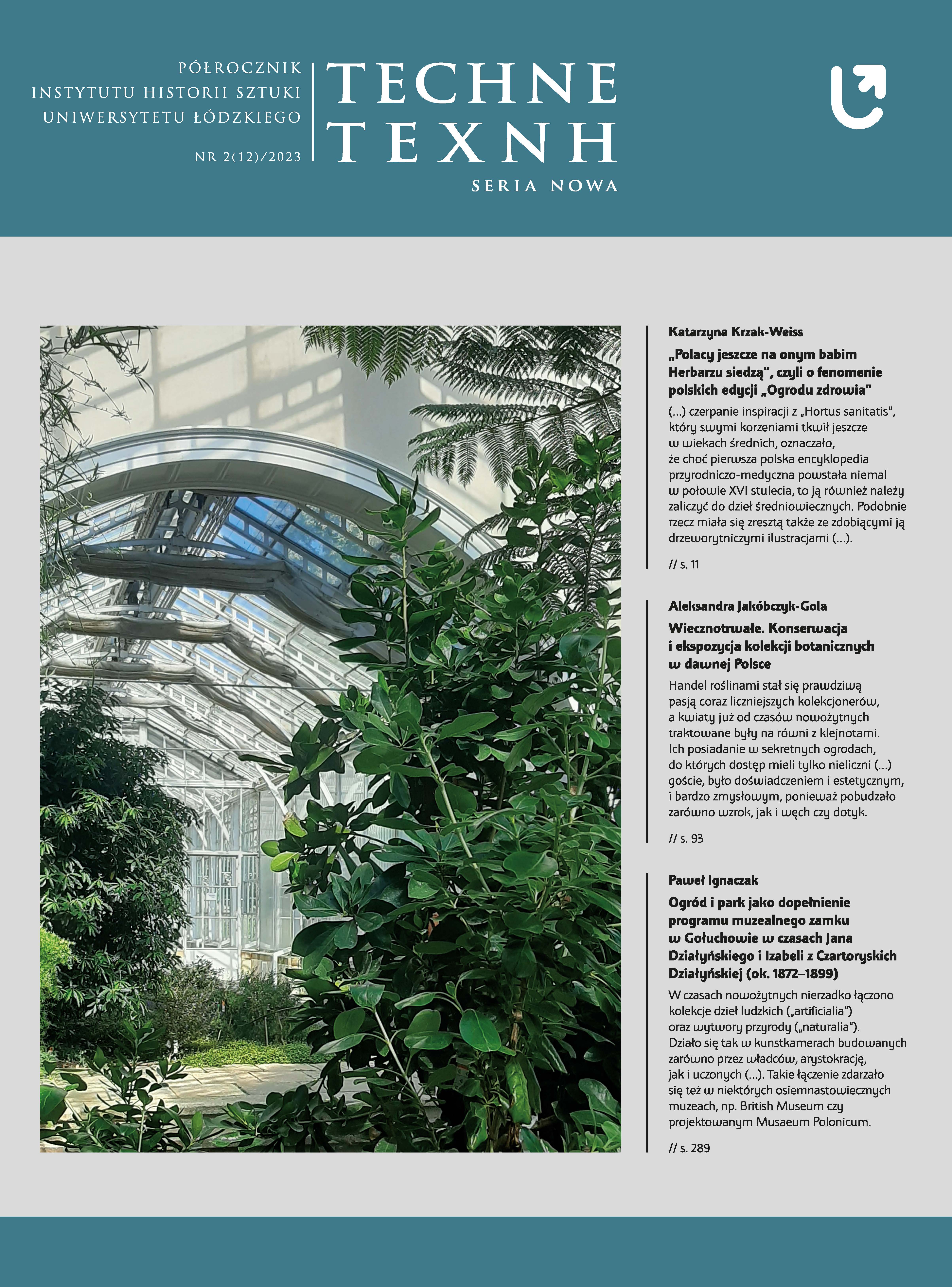Nieznane wizerunki założenia pałacowo-ogrodowego w Bolimowie ze zbiorów drezdeńskich
Unknown images of the palace and garden complex in Bolimów from the Dresden collections
Author(s): Andrzej GałkowskiSubject(s): History, Fine Arts / Performing Arts, Social history, Modern Age, Special Historiographies:
Published by: Wydawnictwo Uniwersytetu Łódzkiego
Keywords: Bolimów; Aleksander Józef Sułkowski; architectural designs; Dresden; modern architecture; Tylman von Gameren
Summary/Abstract: The author of the article found in the Dresden collections a previously unpublished iconography of a palace, the so-called castle in Bolimów with a garden, a plan for transforming the garden, two detailed plans of the town of Bolimów, and a design for a new mill owned by starosta. The results of the research in the Dresden collections perfectly complemented the results of the research of Polish archives regarding the Palace in Bolimów, conducted by Włodzimierz Piwkowski from the National Museum in Nieborów and Arkadia, finally confirming the previously unknown appearance of the palace facade and the ground and first floor plans. These plans also confirm the existence of the Gothic tower (recorded in Polish inventories) i.e. so-called the treasury, which was an integral part of the palace and the palace garden, linking the construction of this tower to the times of the Masovian princes.Highly detailed plans of the town of Bolimów scaled in the Saxon elbows, with the St. Anna and Holy Trinity churches and a market preserved to this day and the comparison of these plans with the Lidar map, allowed the author to very precisely locate the palace and garden complex and constitute an opportunity for targeted archaeological research. It is not every day that there is a chance to discover the remains of Gothic buildings related to the Duchy of Masovia, and then a complex from the 17th/18th century.By studying the figures of the Bolimów starostas, author attempted to determine the date of the construction of the rebuilt palace (according to existing Polish sources, the date ranges from 1661 to 1745), and to attribute the above-mentioned foundation to a specific person. Based on stylistic analogies, a surprising hypothesis may be put forward regarding the author of the architectural design. The Dresden plans for the city of Bolimów and the transformation of the garden (from 1736–1738) were ultimately considered by the author to be inventory drawings and a new garden design, respectively, drawn during the times when Aleksander Józef Sułkowski was the starosta of Bolimów, pointing out significant analogies with the drafting style of the palace and garden in Piaseczno (1736) by the same starosta. Additionally, the plan of the new starościński mill signed by Pont Leutnant Büttner was dated to the years 1736–1738 and was also associated with Sułkowski’s foundation.With this paper, the author would like to start a discussion on his proposed proposal to conduct archaeological research and possibly rebuild the complex based on very detailed Dresden designs, including covering this topic by the nearby Museum in Nieborów and Arkadia (a branch of the National Museum in Warsaw), where the palace complex is younger than the mentioned Gothic tower. The Bolimów thread was already the subject of interest of the Museum in Nieborów and Arkadia, especially for the period when the owners of Nieborów and Arkadia were also the starostas of Bolimów, which took place at the end of the 18th century. But now there is an opportunity to deal with the earlier period of Bolimów’s history. The above discovery of Bolimów plans takes on additional importance in the light of Bolimów’s recent regaining of city rights and could constitute a basis for popularizing the history of the new/old city. The author hopes that perhaps it will inspire the scientific and museum community to establish a museum in Nieborów, Arkadia and Bolimów.
Journal: TECHNE. Seria Nowa
- Issue Year: 2/2023
- Issue No: 12
- Page Range: 141-162
- Page Count: 22
- Language: Polish

